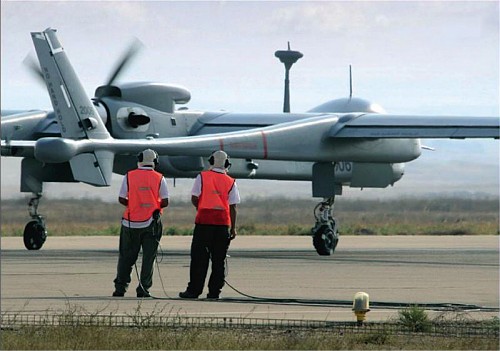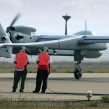
Russia Procures Western Technology, While Struggling to Manufacture Modern Weapons
Publication: Eurasia Daily Monitor Volume: 7 Issue: 185
By:

The Chairman of the Duma Defense Committee, Viktor Zavarzin, disclosed last week some details of previously secret future defense budget procurement plans. Procurement expenditure on new weapons will grow dramatically from 380 billion rubles ($12.7 billion) in 2010 to 980 billion rubles ($32.7 billion) in 2013. Spending on defense research and development (R&D) will grow much less from 107 billion rubles ($3.6 billion) in 2010 to 186 billion rubles ($6.2 billion) in 2013. R&D spending will decrease from 22 percent of the overall procurement budget in 2010 to 16 percent in 2013. This comparative decrease of R&D spending apparently reflects the efforts of Defense Minister, Anatoliy Serdyukov, and First Deputy Defense Minister in charge of rearmament, Colonel-General (retired) Vladimir Popovkin, to close “worthless research programs” (Vedomosti, October 12). It may also indicate the increasing reliance of the Russian military on buying Western weapons and technology instead of developing the domestic defense industry.
While public opinion in the West and in Moscow was mostly focused on the prolonged negotiations with France to purchase Mistral-class helicopter-and-troop-carrying warships, a potentially much more important deal has been quietly signed between Russia and Israel to jointly produce unmanned aerial vehicles (UAV’s). While official Moscow was silent about the signing, the Israel Aerospace Industries (IAI) Corporation published pictures of the ceremony marking the biggest defense technology transfer deal between Russia and a Western nation since 1945. Yair Shamir, Chairman of the IAI board of directors and Itzhak Nissan, IAI’s President and CEO represented Israel; and on the Russian side –Minister of Industry and Trade, Viktor Khristenko, together with the Director-General of Joint Industrial Corporation Oboronprom, Andrei Reus. Under the deal IAI will “sell UAV assembly elements and services to Oboronprom” beginning next year. According to Reus, “this is a huge step towards deepening cooperation between IAI and Russian industry that will also strengthen the bilateral relationship between Israel and Russia.” Shamir added: “IAI is proud that Russia has chosen IAI technologies and products, and we are pleased to be able to cooperate” (www.iai.co.il, October 13)
Oboronprom was created by Russia’s arms trading monopoly Rosoboronexport to handle its sprawling defense industrial assets. Today both are affiliated to the enormous Rostekhnologii government-owned corporation –headed by Director-General, Sergei Chemezov (Prime Minister, Vladimir Putin’s former comrade from the Soviet-era KGB). Chemezov was the first to announce last May that Russia was in talks with IAI to create a joint venture to produce military UAV’s in Russia (RIA Novosti, April 21).
The UAV joint production deal is reported to cost $400 million of which Moscow will pay IAI $280 million up front and the remainder ($120 million) will be provided as goods and services, while the term of the contract has a duration of three years (beginning in 2011). A production unit will be built in Tatarstan that will assemble hundreds of modern UAV’s for the Russian defense ministry and other militarized structures. The joint production deal is in addition to the purchases by the Russian military of several consignments of Israeli UAV’s made by IAI. Reportedly the defense ministry procured 12 UAV’s in April 2009 for $53 million and later another 36 worth $100 million and an additional 15 for an undisclosed price. IAI might receive up to $600 million in total, and Israel may acquire an enhanced capability to influence Moscow’s policies in the Middle East while the Russian military will secure an essential capability it previously lacked to fight effectively in local conflicts in the “near abroad” (www.lenta.ru, October 13).
During the abortive war with Georgia in August 2008, according to the chief of the elite airborne forces, Lieutenant-General Vladimir Shamanov, Israeli-made UAV’s constantly hovered overhead, while Russian troops tried but failed to shoot them down. UAV’s gave the Georgian leadership prior information about an imminent second Russian invasion coming from Abkhazia that allowed them to successfully hide in advance most of their troops and heavy weapons, while Russian generals did not know for sure where the enemy was (EDM, June 10).
Popovkin has publicly announced that Russian-made UAV’s are essentially good for nothing and worse than the Israeli ones “by all parameters.” The Chief of the Air Force, Colonel-General Alexander Zelin, supports this opinion. Serdyukov has been more cautious, announcing that if the Russian defense industry can make modern UAV’s, “we will buy [them], but anyway the UAV’s will be assembled on Russian territory” (EDM, May 27).
Last month, Vladimir Verba (Director-General of the Vega corporation that designs UAV’s for the Russian military) announced that by 2013 the Russian defense industry will “catch up with the West” and produce modern UAV’s “without the Israelis” (RIA Novosti, September 23). But Russia does not have and cannot produce engines, electronics and other components to manufacture modern UAV’s. Israeli cooperation is essential, while all the speculation about going forward alone was most likely used as a bargaining ploy by Oboronprom to press the Israelis to sign. The target of “catching up with the West” in three years may reflect the timing of the completion of the UAV technology transfer by IAI.
Shamir is reported to have accused the Israeli defense ministry of being too susceptible to pressure from Washington to force Israeli companies to back out of lucrative arms deals and not fully supporting IAI’s quest for lucrative arms deal with Russia. To avoid the possible export of sensitive technology regulations, the IAI is reportedly claiming the UAV’s that will be assembled using Israeli technology and components will be “civilian” –with no military equipment– and will be used for “civilian purposes” (www.newsru.co.il, October 13). Of course, in reality IAI will help build modern UAV airframes which the Russians may later equip and use as they wish.




